 Léo DUBAL
Léo DUBALvirtual laboratory for archaeometry
dubal (at) archaeometry.org
 Léo DUBAL
Léo DUBAL
History starts when
a group of people agrees
to share a common way to count time.
A calendar represents therefore
a symbol of
identity, which contributes
to the feeling of belonging to a community.
Who knows if sharing a calendar is not
a more powerful discriminating factor
than sharing a common territory ?
Therefore there is not
ONE
and only ONE History,
but as many as there are cultural & calendrical eras.
The timeline
of a cultural era starts
with YEAR 1,
the commemorated date of
the mythical
founding act of this era,
e.g.:
The
French Republican calendrical era starts
on Vendémiaire 1st,
Year 1,
but...it has been introduced only later,
i.e.: on Vendemiaire 15th,
Year 2 !
Its period
of use
extends
from Year 2 up to Year 79, a relatively short time.
Other mythical calendrical era
founding events are:
for the Seleucid
Era, SE:
Babylon's
mythical take-over by Seleukos
then (for Syrians) Gaza's mythical battle.
for Ab Urbe Condita Era, AUC:
Rome's
mythical fundation by Romulus
for the Hispanic Era or Safar date, ERA:
Iberic penninsula's mythical romanization.
for the Anno Hegirae or Hijri Era,
AH:
from
Mecca to Medina
mythical
migration
from a muslim tribe.
for the
Anno Domini,
AD:
the
mythical Incarnation of the Lord,
see https://www.archaeometry.org/bede.pdf.
Chronology,
in contrast to calendrical eras,
necessitates a secular
& universal reference time-scale.
The astronomer Johannes Kepler introduced such a time scale
he called vulgaris
aerae.
He kept the length of the year the same as
the one of the
alexandrian astronomer Sosigene,
and set the current year on his time scale to +1616,
in agreement
with 1616 AD, as during his lifetime,
the Anno Domini calendar was broadly used in
Europe.
One century later, Kepler's secular timescale
has been
renamed as
Common Era or CE.
Then,
one would tune the
remaining 5 strings to this same frequency,
by cliping them with a finger in the prescribed position, see below:
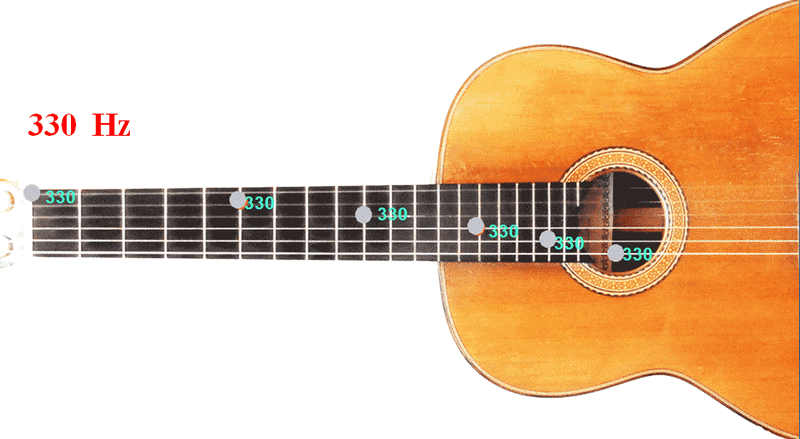
As we all know there exists "no external event generator" to tune Kepler's secular timescale.
Nevertheless some natural
events have been reported in terms of various
timelines.
To illustrate this point, let us look at five
lines of the page m0026 of the
Livro
da Noa which I discovered in 2018 in the archives of Coimbra
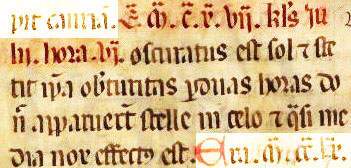
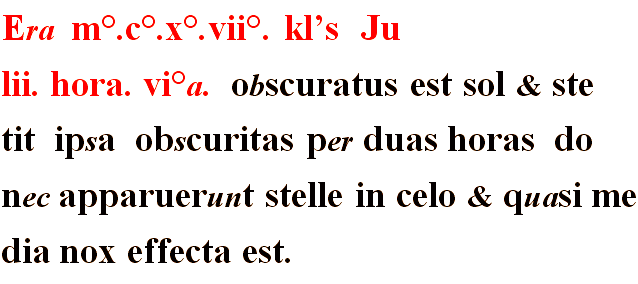
Thanks to Xavier Jubier 5 Millennium Corpus
of
Solar Eclipses
http://xjubier.free.fr/site_pages/solar_eclipses/
5MCSE/xSE_Five_Millennium_Canon.html
which is directly coupled to GoogleEarth,
one can (with some training) easily find out to which solar eclipse
this
annal is refering to:
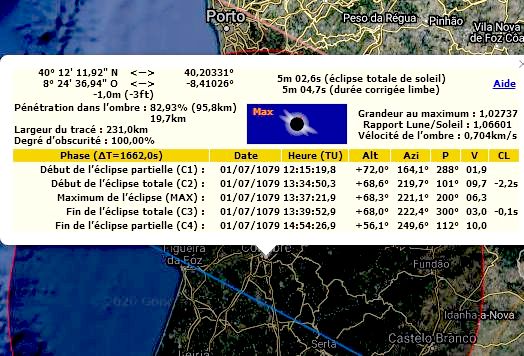
Therefore, it turns out that year 1117
ERA corresponds to +1079.07.01
CE
Those findings are discused in details
in Portuguese: https://www.archaeometry.org/eraPT.pdf
in Spanish: https://www.archaeometry.org/eraES.pdf
in Catalan: https://www.archaeometry.org/eraCT.pdf
in
French: https://www.archaeometry.org/era.pdf
The table below gives a list of
ancient solar eclipses
reported in terms of various timelines:
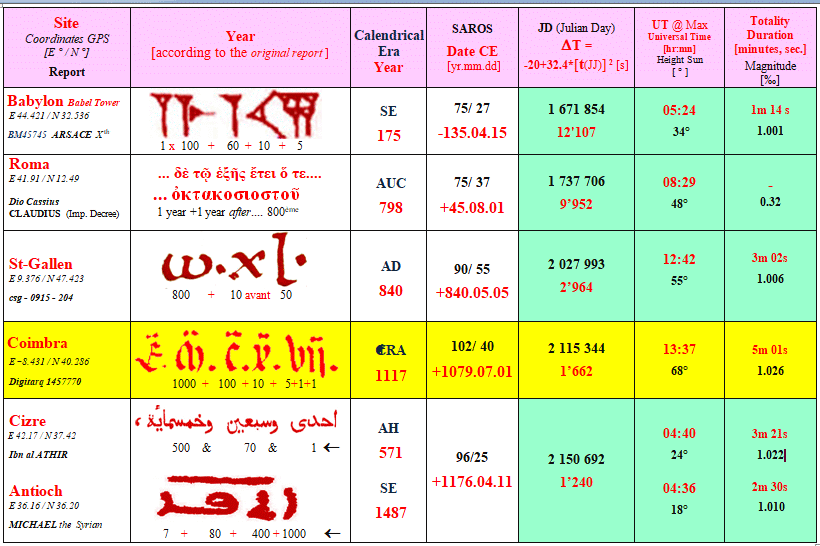
Let us position those data onto the guitar-like chart:
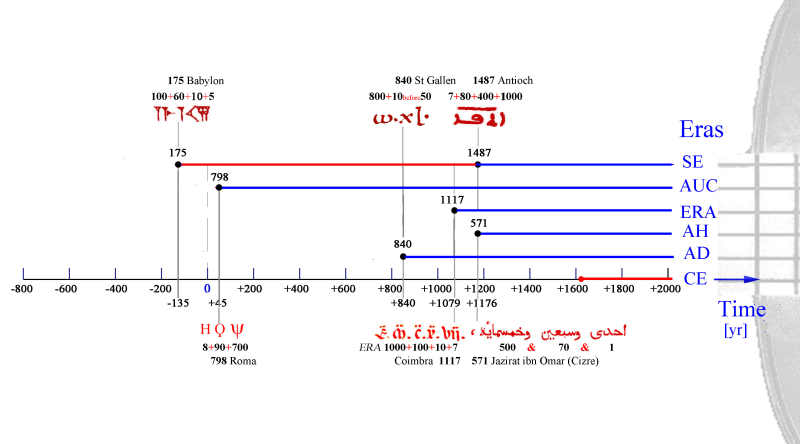
Using Kepler secular timeline we have retro-dated
those Solar
eclipse reports.
One sees that 2 solar eclipses have been recorded in terms
of Seleucid
Era with a 13 centuries timespan!
This timespan indicate to us that the
period
of use of SE extends to at least this
time laps,
while Common Era has
only been in used from 1616 on.
In order to find out the extend of the period of use of
the eras discussed here,
one will have to look for
some other kinds of artefact.
The colophon of an
artefact provides its date and site of
manufacture,
e.g.: the colophon of the above pictured conical guitar...
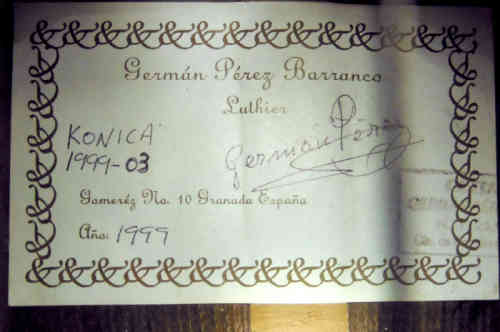
For ancient colophons labelled in terms of various calendrical eras,
see:
Seleucid
Era, SE:
https://www.archaeometry.org/seleucid_era.pdf
Ab Urbe Condita, AUC:
https://www.archaeometry.org/ecliptique.pdf#page=25
Era Hispanica, ERA:
https://www.archaeometry.org/eraES.pdf
Hijri or Anno Hegirae, AE:
https://www.archaeometry.org/hijri.pdf
Anno Domini, AD:
https://www.archaeometry.org/ecliptique.pdf#page=34
Common Era, CE:
https://www.archaeometry.org/ecliptique.pdf#page=37
One should be aware that :
-
the introduction of new
eras might be the fact of a sole individual (Varro, Bede)
and that the earliest year given on colophons
might amount up to several hundreds,
making difficult to retrodate down to the mythical Year 1 of those eras (AUC, AD) .
- the beginning of the year might swap season
(and even mythical founding event)
during its period of use (SE).
- it might take decades until some
authorities declared official
a
given era (ERA).
- the choice of astral cycle (lunar, solar...) might differ
(AH)
While myths escape
chronology, nothing prevents one
to retro-compute the correspondance, to Common Era, of a
mythical Year 1,
even far beyond the lowest limit of the period of use of its
calendrical
era:
-
Year 1 of the Seleucid Era corresponds
to year -310 CE.
This era has been promoted 30 years after the death of the dictator
Seleukos
probably by babylonian astronomers and it remained in use
until printing's
invention.
-
Year 1 of the Ab Urbe Condita
era
corresponds to
year -753CE.
This era has been promoted by Varo in year
700 AUC.
- Year 1 of ERA
corresponds to
year -38
CE.
In 554
ERA,
i.e. 74
years after the 1st
use of this era in funerary art,
the arianist
Council of Tarragona officialised this calendar,
- Year 1 of Hijri era correponds to
year +622
CE.
The
promotion of this
calendrical era
took place prior to year
67 AH.
- Year 1 of Anno Domini corresponds to
year +1
CE.
This era has been promoted by
the Venerable Bede probably
around 725
AD.
To
summarize, let us now integrate
- Dual-date of
anchoring solar eclipse
-
Period of use of calendrical era
-
Mythical Year 1
into
the guitar-like timelines chart:
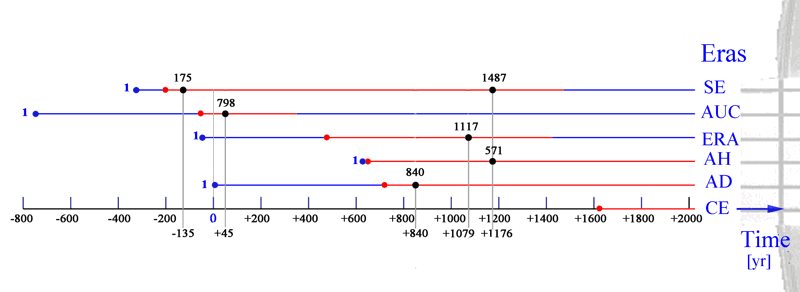
Nîmes, +2020.07.02 CE